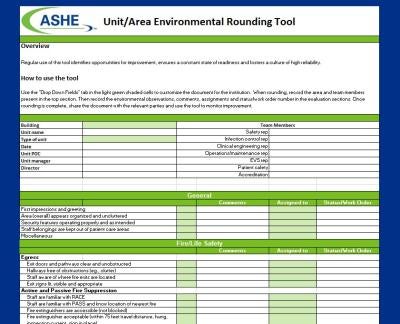Environmental Rounding Tool

Facilities managers are experts at mitigating life and patient safety issues, but many struggle to control infection risks in the hospital environment during construction or while performing maintenance and repairs. What if we treated infection risk for facilities the same way we do with patients, where infection is defined as the "invasion and growth of germs in the building system"?
This tool helps facilities managers apply the tactics of building system maintenance to infection control by identifying opportunities for infection risk during rounding.
| Download Tool | Members download this tool. Click here to join ASHE! |
| Read article | Check out the related HFM magazine article: "Applying building management tactics to infection control." |
ASHE authorizes the copy, use and customization of this template, by health care facilities for non-commercial use only. In consideration of this authorization, the user agrees that any copy of this document which the user makes shall retain all copyright and other proprietary notices that may be contained therein. ASHE accepts no responsibility or liability for the accuracy or the completeness of the information in this document.
